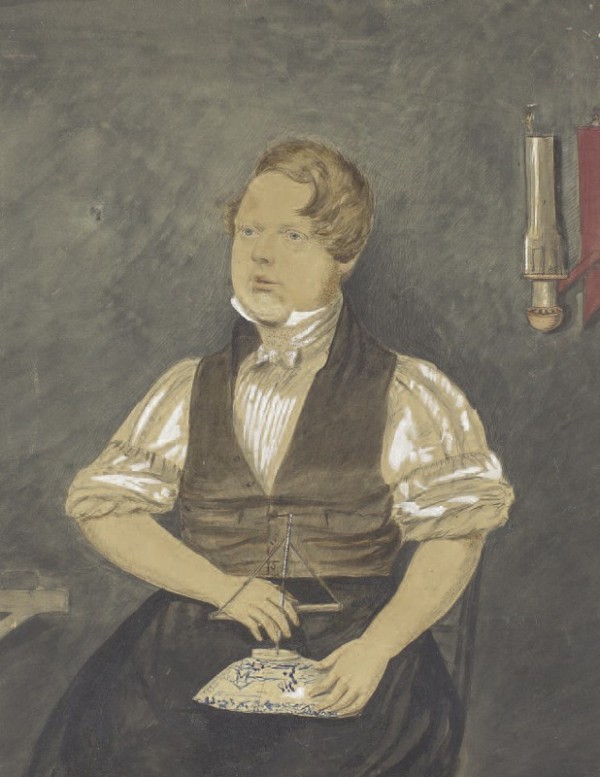
Artist unknown, England or America, ca. 1820-1830. Watercolor and gouache on paper. 9" x 6 3/4". (Private collection.) A rare period image of a china mender operating a bow drill to prepare a cracked bowl for a staple repair.
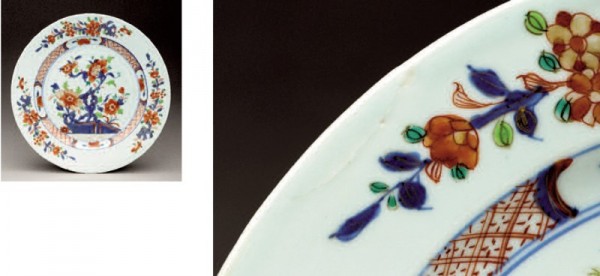
Plate, Jingdezhen, China, ca. 1735. Hard-paste porcelain. D. 9". (Colonial Williamsburg Foundation, Museum Purchase, 1968-6.) Note detail of rim showing repair before firing.
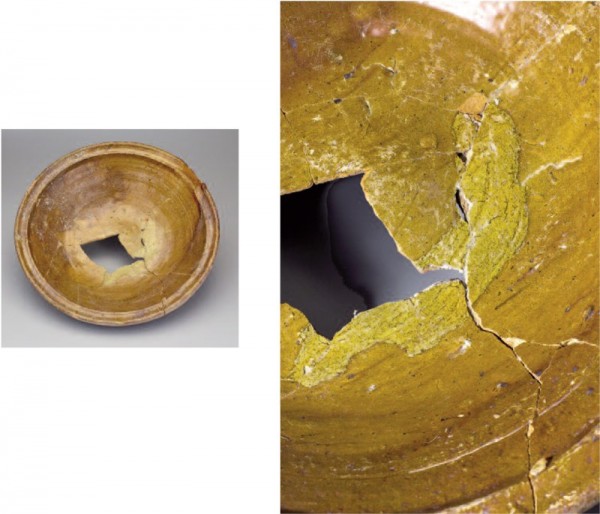
Milk pan, England, ca. 1730. Slip-decorated, lead-glazed earthenware. D. 14 1/2". (Courtesy, Kingsmill Resort, Williamsburg, Virginia; photo, Robert Hunter.) Excavated in Kingsmill, Virginia.

Dinner just over, or The Consequences of a Toe tripping at the Top of a Stair-Case, engraved and published by J. Baldrey, Cambridge, England, July 20, 1799. Black-and-white etching with period hand color. (Colonial Williamsburg Foundation, Museum Purchase, 1957-30.)
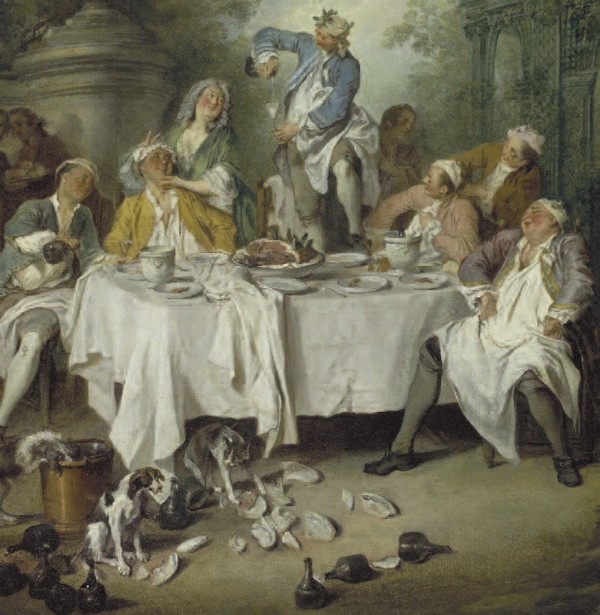
Nicolas Lancret, Luncheon Party in a Park (detail), France, ca. 1735. Oil on canvas. 21 5/16" x 18 1/8". (Courtesy © 2017 Museum of Fine Arts Boston, Bequest of Forsyth Wickes, The Forsyth Wickes Collection, 65.2649.)
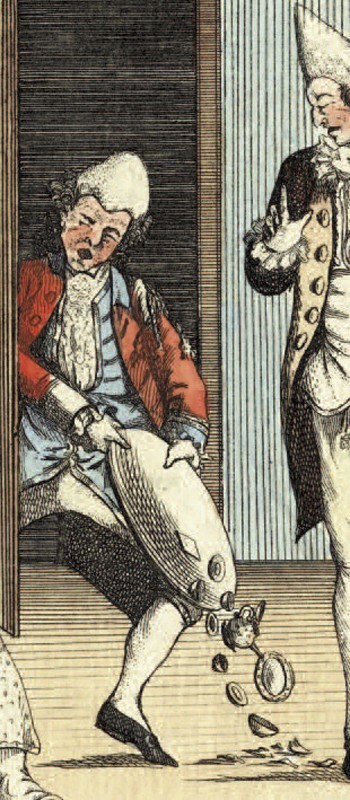
A Macaroni Dressing Room (detail), published by Matthew Darly, London, England, 1772. Black-and-white etching and line engraving with period hand color. (Colonial Williamsburg Foundation, Museum Purchase, 1941-13.)
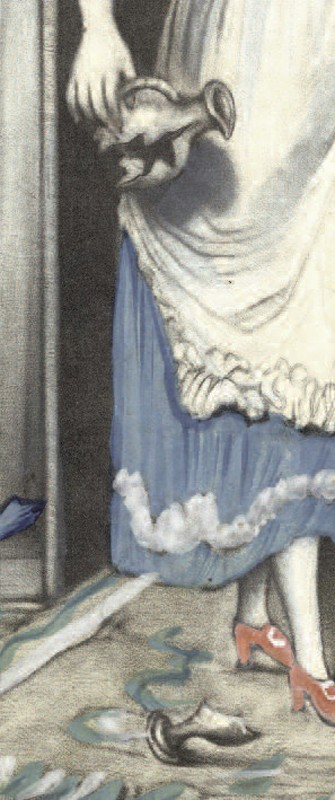
A Young Hussey Charging Old Toothless with an Imposibility, or the Cracked Pitcher (detail), published by R. Sayer and J. Bennett. London, England, 1778. Black-and-white etching and line engraving with period hand color. (Colonial Williamsburg Foundation, Museum Purchase, 1990-172.)
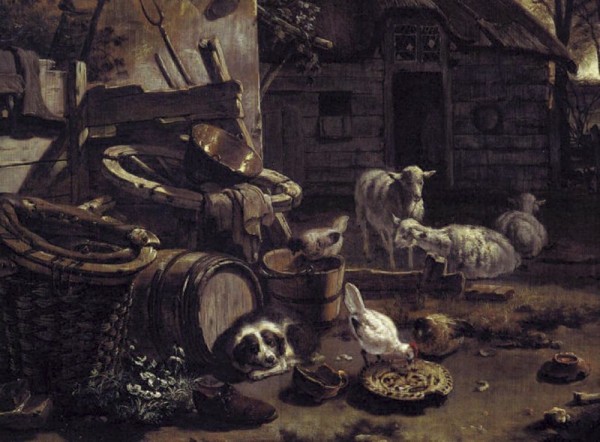
Egbert van der Poel, Barnyard Scene (detail), Netherlands, 1658. Oil on canvas. (Private collection; photo © Christie’s, Amsterdam.)
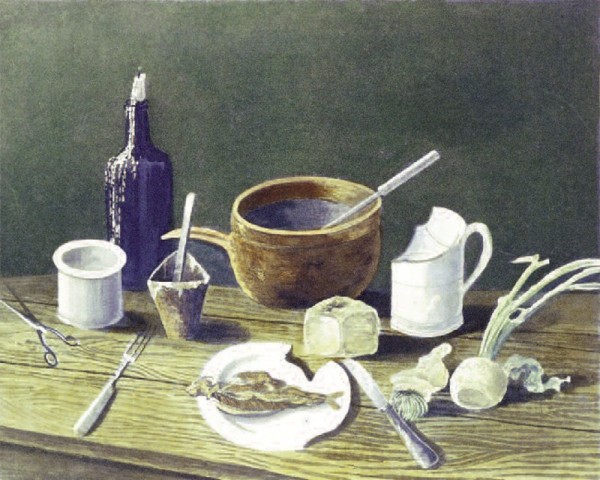
Penury, published by Peter del Pasquin, London, England, 1796. Black-and-white etching and line engraving with period hand color. (Colonial Williamsburg Foundation, Museum Purchase, 1964-64.)
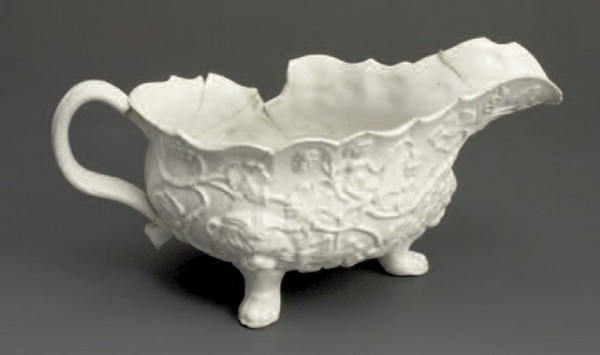
Sauceboat, Staffordshire, England, ca. 1750. Slip-cast, white salt-glazed stoneware. H. 2 5/8". (Courtesy, Strawbery Banke, 1985.15; photo, Craig McDougal.) Excavated from the Hart-Shortridge House site in Portsmouth, New Hampshire.
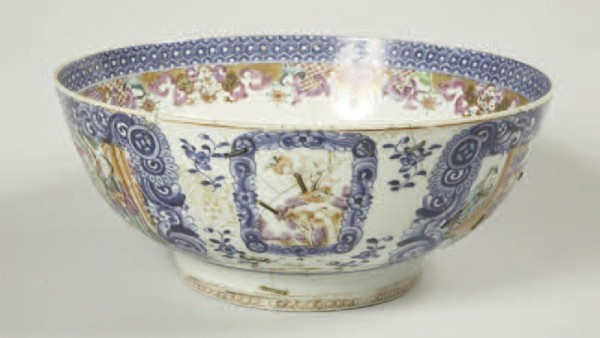
Punch bowl, Jingdezhen, China, ca. 1780. Hard-paste porcelain. D. 11 1/4". (© Bristol Museums, Galleries & Archives.)
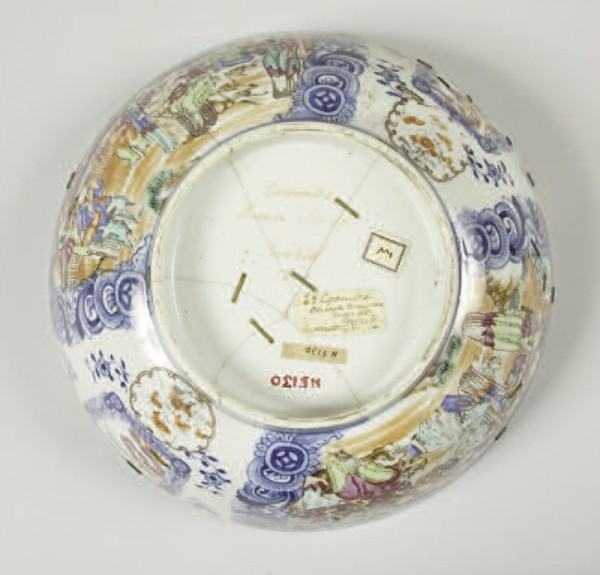
Base of the punch bowl illustrated in fig. 11. Inscribed by the china mender in low-fired iron gall ink under the foot: “Coombes / Queen Street / Bristol / 1802”
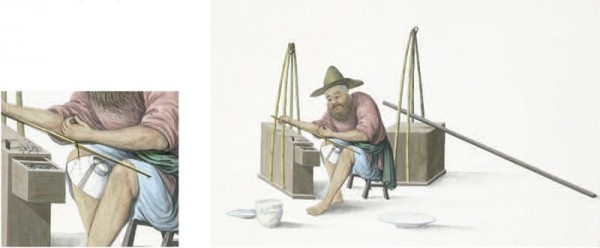
A Porcelain Mender (and detail), possibly by Puqua, Guangzhou, China, ca. 1790. Watercolor. 14 1/4" x 18 1/8". (© Victoria and Albert Museum.)

Bow drill with accessories, China, nineteenth century. Wood, iron, bronze, steel. (Private collection; photo, courtesy private collection.)
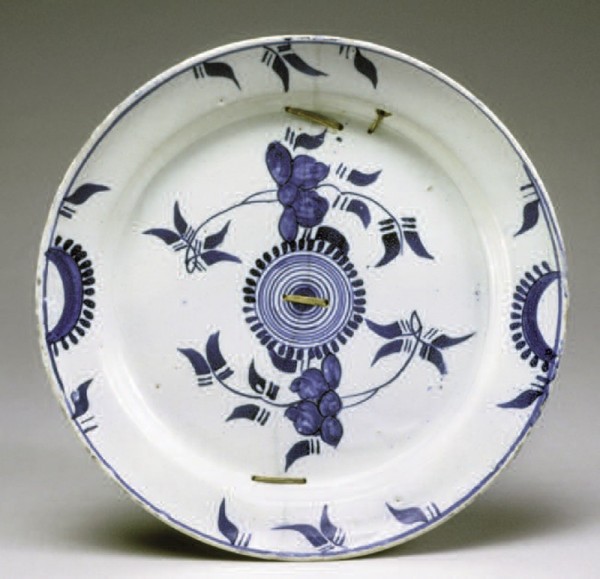
Plate, Bristol, England. Tin-glazed earthenware. D. 8 5/8". (Courtesy, Historic Deerfield, Inc.)
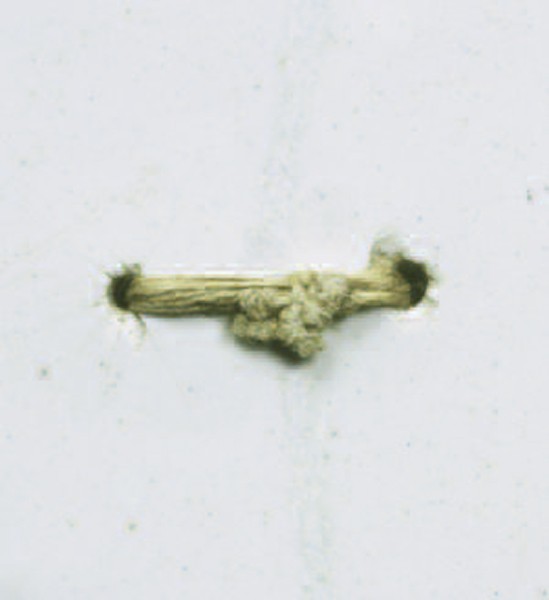
Detail of the thread repair on the back of the plate illustrated in fig. 15.
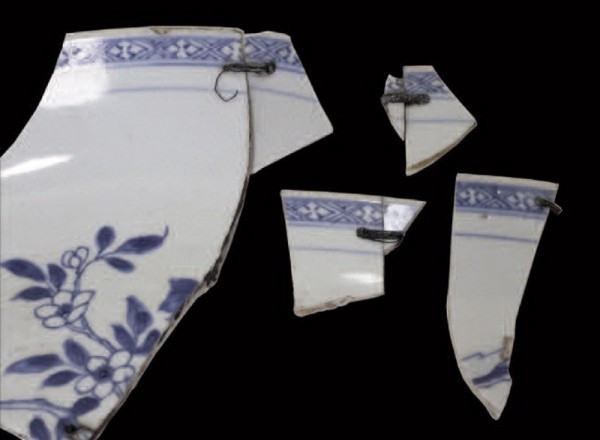
Threaded wire rivets on punch bowl fragments, Jingdezhen, China, ca. 1750. (Courtesy, Independence National Historical Park Collection. Photo courtesy of Deborah L. Miller and Robert Hunter.) Excavated in Philadelphia, Pennsylvania.
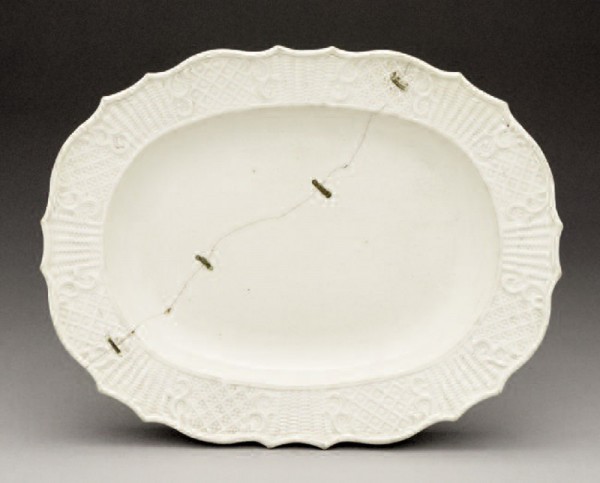
Dish, Staffordshire, England, ca. 1760. White salt-glazed stoneware. L. 11 1/4". (Courtesy, Colonial Williamsburg Foundation, Museum Purchase, 1976-115.)

Detail of the dish illustrated in fig. 18. Note the threaded wire rivet with holes filled with glue.

Advertisement, New York Journal, July 23, 1767. (Courtesy, American Antiquarian Society.) China and glass mender Nathaniel Lane itemized his prices for rivet repairs.

Entry from daybook kept by Philadelphia silversmith Thomas Shields, November 1, 1775. (Courtesy, The Joseph Downs Collection of Manuscripts and Printed Ephemera, Henry Francis du Pont Winterthur Museum.)
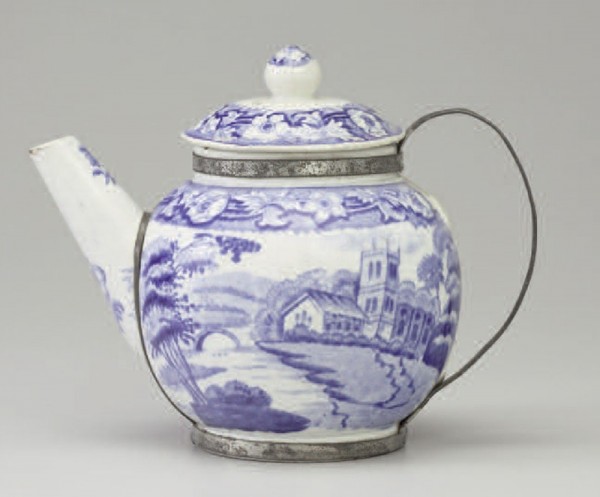
Teapot, England, ca. 1810. Transfer-printed pearlware with tin replacement handle. H. 4". (Courtesy, Collection of Old Salem Museums & Gardens, Gift of Emil Shaffner, 837.1.)
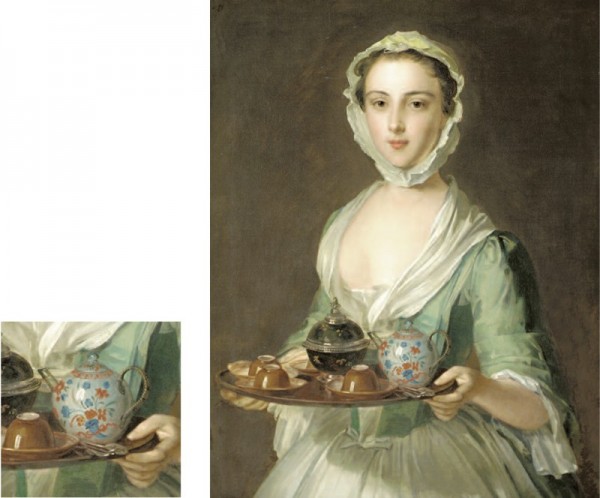
Philippe Mercier (1689–1760), Portrait of a Young Woman Holding a Tea Tray, France, eighteenth century. Oil on canvas. 35 1/8" x 28". (Private collection; photo, © Christie’s Images / Bridgeman Art Library.) Note the teapot in the detail with a silver-tipped spout and wicker-wrapped replacement handle.
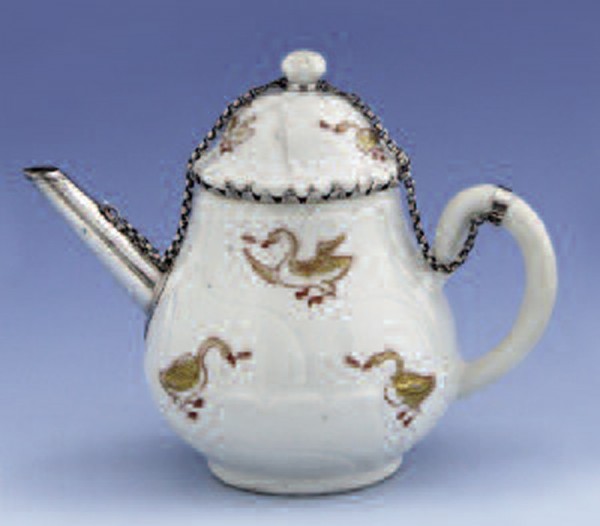
Teapot, Jingdezhen, China, ca. 1735. Hard-paste porcelain, silver replacement spout, chain, and mount for lid. H. 5 1/8". (Colonial Williamsburg Foundation, Gift of Murray Nimmo, 2013-143.)
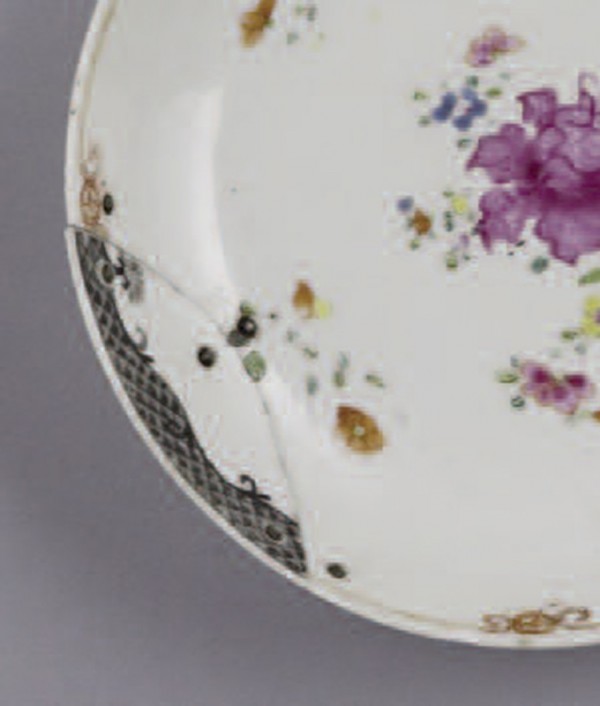
Saucer, Jingdezhen, China, ca. 1780. Hard-paste porcelain. D. 5 3/4". (Colonial Williamsburg Foundation, Gift of Catha Grace Rambusch, 2013-22.) An arc-shaped chip on the rim was ground down and fitted with a piece from a different Chinese porcelain dish decorated en grisaille. The replaced piece is attached to the dish with three metal rivets—only the holes are visible on the face of the dish.
